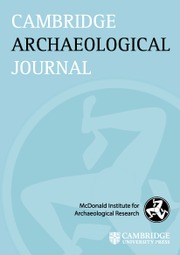No CrossRef data available.
Article contents
Buried Scripture and the Interpretation of Ritual
Published online by Cambridge University Press: 21 February 2022
Abstract
Inference to religion and ritual does not require scripture. Since the early twentieth century, archaeologists have identified hundreds of deposits containing Buddhist scriptures, images and ritual objects throughout the Japanese archipelago, the majority dating to the late Heian period (794–1185 ce). Previous research suggests that scripture was the central feature of these deposits. This article argues that these deposits resulted from a range of highly variable contexts of religious and social practice, not limited to a focus on scripture. I survey early excavations and interpretations of sutra burial and then turn to two main case studies. These examples show that these deposits were complex assemblages that implicated diverse religious meanings, time frames and social actors. Scripture deposits can demonstrate how religious ritual illuminates, underwrites and interweaves variant scales of agency, time and social practice.
Information
- Type
- Research Article
- Information
- Copyright
- Copyright © The Author(s), 2022. Published by Cambridge University Press on behalf of the McDonald Institute for Archaeological Research

